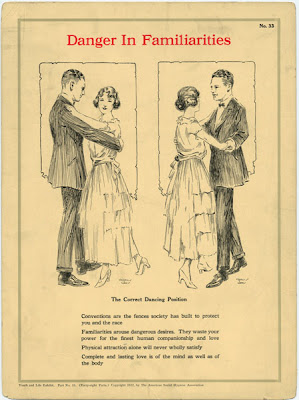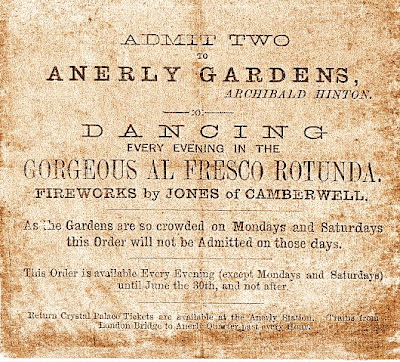An acccount from the excellent Keep Cool - The Black Activists Who Built the Jazz Age by Ted Vincent (Pluto Press, 1995):'The musical achievements of the 1920s must be seen in the light of the hard living conditions that Black people endured. Lynching claimed over 100 victims a year between 1910 and 1919, and these official annual figures document only the reported terrorist murders. But by 1920 reported atrocities were down to sixty-five and had been further reduced to eighteen by 1927.
Before the Jazz Age it was dangerous in most Southern towns for a Black to be seen walking fast, or talking loudly, let alone trying to make a reasonable contract for a musical performance. These dangers were a prime reason that musicians of this period poured into those oases of opportunity, New Orleans and Memphis. The decline in lynchings, beatings, cross-burnings and the like helped facilitate the Jazz Age by improving working conditions for musicians, especially in the South.
Harrowing accounts of the life of a Black musician travelling the South in the decades before the Jazz Age are plentifully provided in W. C. Handy's autobiography. On one occasion in Alabama, Handy and his touring band were ordered to accompany a menacing fellow to a murder trial. Handy's uniformed band was marched into the courtroom. They were told that they should play 'Dixie' as soon as the judge announced the acquittal of the threatening fellow's brother. The trial proceeded. The judge indeed ruled for the defence. And Handy and the band immediately obliged by filling the courtroom with the sounds of 'Dixie'.
In another incident, Handy and his band were kidnapped in Mississippi, put in a waggon, and taken to what they were told would be a murder. Their captors' plan was for them to commence playing as soon as the deed had been committed. The intended victim was a White store owner who had 'insulted' some of Handy's captors' Black workers. Handy and his musicians were stationed outside the store while the prospective murderer and his friends confronted the store owner, calling him names and trying to provoke a fight. But the store owner refused to fight or to take the gun that was thrust in his hand so that he could be shot 'in self-defence'. Handy and his group were finally let go after being forced to play at a dance for the would-be murderer and his crowd. The women, it turned out, were not in a very festive mood and the dancefloor was largely empty. The men remained in the angry mood they had attained in getting pumped up to kill somebody. The next night three local Blacks were lynched.
This uncertainty for African-American music continued into the early Jazz Age. For instance, a Chicago Defender item of 4 February 1922 reported that six members of a Black orchestra 'beaten by a mob of fifteen men, at Miami, Florida, are back home' in Columbus, Ohio. The Defender went on to describe the incident in Miami as a case of 'professional jealousy'. Thomas Howard, manager of the group, explained to the Defender, 'Down there the white union musicians do not recognize the colored union.' Howard emphasised that all the members of the Columbus, Ohio group and all other groups that he managed were union men.
A race riot where Whites invaded a Black neighbourhood was one type of trauma Black musicians experienced in both the North and the South. In June of 1921, the Broadway star Cleo Mitchell and her touring Jazz Repertory Company had the bad luck to hit Tulsa, Oklahoma, for a week's engagement at Mrs Williams's Dreamland Theatre just in time to get caught up in one of the more gruesome of these White invasions.
Tensions had been mounting in fast-growing Tulsa. The mile-square Black neighbourhood was located on prime real estate near downtown. Pressure was being brought upon Black residents and businesses to sell. Among the outstanding buildings was Mrs Williams's 'beautiful theatre'. On the one hand, this well-to-do Black businesswoman had the only theatre in Tulsa for l3lack patrons (one of the mere nine theatre/movie houses in the whole state of Oklahoma that then catered to a Black clientele - according to a survey by Billboard's Black reporter James A. Jackson). While Williams's Dreamland was an important asset to the black community, it was also serving to bridge the gap between the races by drawing White customers, who came to see the high-quality acts WilIiams booked for her stage.
Then came the bloody and fiery Tulsa riot, the last of the nearly three dozen White mob invasions of Black communities which occurred between 1917 and 1921. These riots typically began on such pretexts as a White person being jostled in a streetcar, Or a black appearing in the 'wrong part' of a public beach. In this regard the Tulsa riot began routinely enough: a Black was arrested for allegedly bothering a White woman in an elevator. A White mob headed for the jail in the hope of lynching the alleged culprit.
But this last of the White mob invasions had a new twist. The community had prepared in advance. A group of armed Blacks surrounded the gaol before the White mob arrived. The Tulsa branch of the revolutionary African Blood Brotherhood (ABB) had announced earlier in the week that any attempt at lynching in Tulsa would be stopped, by whatever means necessary. At the gaol, one White man tried to take a Black man's gun from him. In the ensuing scuffle the White man was shot, and the riot was on.
Cleo Mitchell and the performers of her jazz Repertory Company sought refuge in the large Dreamland Theatre, hoping to wait out the riot. For better than two days the White raiders were kept out of the Black community. ABB militants and other armed Blacks had effectively barricaded the streets leading into the Black community, and Marcus Garvey's Black Cross nurses mobilised and volunteered aid. Over the next two days many Whites died trying to get past the defensive positions. 'Casualty list favorable despite handicap,' headlined a Washington DC Black newspaper in its report from Tulsa.
Frustrated by the barricades, the enraged Whites hired aeroplanes and loaded the planes with dynamite and petrol bombs, which were dropped into the Black community from the air. Fires raged. The Black defenders fell back to try and save their homes from fire. The White mobs breached the barricades and headed for a Black church, which they torched. When Blacks inside ran out they were gunned down. The Dreamland Theatre went up in flames. Mitchell's jazz Repertory Company fled for their lives, leaving behind their costumes and wardrobe and all their personal possessions except what they were wearing on their backs. The theatre was then burned to the ground. According to the Chicago Whip, Williams's Dreamland was located 'close to a white theatre ... [and] it was said to be picked as one of the first targets because it materially reduced the white theatre's patronage'.

A truce was arranged whereby the Oklahoma National Guard entered the Black neighbourhood and disarmed most of the Blacks. Mitchell and her troupe were ordered at gunpoint to accompany the National Guard to the stockade. White mobs were then allowed back into what was left of Black Tulsa, which was then burned to the ground. In the end, the cost in lives had been estimated at 150 Blacks and fifty Whites. Garvey's Negro World noted that the loss of the Dreamland was a painful blow in that 'it was the pride of the Negroes of the city'.
Mitchell and her company left Tulsa as soon as possible, heading for Texas, where 'the company was relieved by the kind efforts of Mrs. Chintz Moore, wife of a Dallas theatre owner, who took them into her home and relieved their immediate needs', noted reporter jackson in Billboard, adding that two Black vaudeville troupes then playing Dallas gave benefit performances for their distraught comrades from Tulsa. A Black journalist in lndianapolis, Indiana, offered to co-ordinate benefits from around the country to help 'in placing the unfortunate on their feet again'.
Living up to 'the show must go on' tradition, by 20 june, a matter of days after the riot, Mitchell and her jazz Repertory Company were sufficiently recovered to open an engagement at the Lyric Theatre in New Orleans.
The riot at Tulsa had important, and double-edged, repercussions for the growth of the jazz Age. It took place at a time when many Black communities were under stress. Around the nation moves were afoot to strip Blacks of power in the theatre business. The summer 1921 riot that saw a lynch-minded mob burn the Dreamland Theatre in Tulsa occurred around the same time that mobsters of the Chicago gangland variety brought pressure to bear in Chicago's South Side to end Black control of the jazz cabarets, including a memorable cabaret that also carried the name Dreamland.
The barbaric riot that removed Tulsa's Dreamland did, however, have one salutary effect. Invading White mobs had lost many lives, and coming on the heels of costly White mob invasions of other Black cities, the Tulsa experience proved to be the convincing example that ended raids into Black urban centres by old-fashioned types of mobs in white sheets (the Chicago-style 'mob' was another story). The White invaders in Tulsa expected to have an urban version of the old rural 'lynching bee'. But the brave and organised defence of Tulsa raised the ante beyond what potential future mobs were willing to match.
Within a few years, following the crude version of 'urban renewal' which was the riot that had cleared the former Black community, Tulsa had a new Dreamland Theatre in the neighbourhood that became the new Tulsa Black ghetto. Part of the rebuilding of Tulsa involved re-establishing trust between the races. Inter-racial commissions were formed. Choirs from Black churches visited White churches, and vice-versa, with visiting jazz troupes.'



































